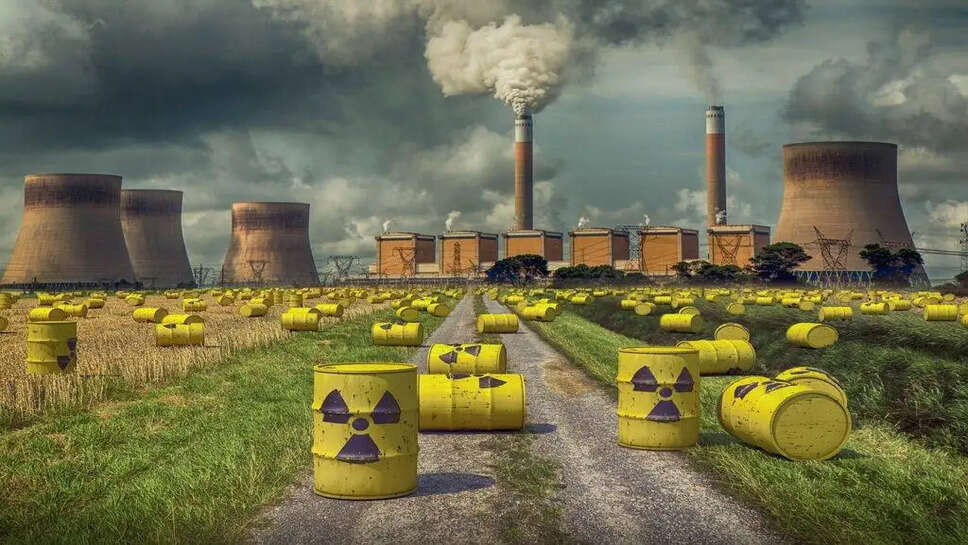Global Nuclear Tensions Rise: These 9 Countries Hold the World's Deadliest Weapons

In 2025, the world stands at a critical juncture as geopolitical tensions, power rivalries, and military modernization programs all contribute to the mounting risks of a nuclear confrontation. Despite decades of non-proliferation talks and treaties, nuclear arsenals remain potent symbols of power and deterrence. As more nations invest in modernizing and expanding their nuclear capabilities, global security faces new threats—both from traditional nuclear powers and emerging challengers.
This article looks at the top 9 countries in 2025 that possess nuclear weapons, based on public estimates of stockpiles, delivery capabilities, and modernization status, and discusses how each contributes to the growing nuclear risk worldwide.
1. Russia
Estimated warheads: ~5,800
Deployed warheads: ~1,600
Russia maintains the world’s largest nuclear arsenal in terms of total warheads. It possesses a highly diverse set of delivery systems, including intercontinental ballistic missiles (ICBMs), submarine-launched ballistic missiles (SLBMs), and strategic bombers. In recent years, Russia has developed new-generation hypersonic glide vehicles, nuclear-powered cruise missiles, and underwater torpedoes capable of carrying nuclear warheads.
Ongoing tensions with NATO, the Ukraine conflict, and a breakdown in arms control treaties like New START have heightened concerns about Moscow’s nuclear posture. The Russian doctrine allows the use of nuclear weapons if the state perceives an existential threat, further raising red flags in the current climate.
2. United States
Estimated warheads: ~5,200
Deployed warheads: ~1,750
The United States holds the second-largest arsenal, with weapons deployed across land-based ICBMs, SLBMs, and air-delivered gravity bombs. It also retains tactical nuclear weapons in Europe as part of NATO’s nuclear sharing program.
Washington is currently undertaking a multi-decade modernization plan to update all three legs of its nuclear triad, including new missiles, bombers, and submarines. While the U.S. has long advocated arms control, it has also expressed concerns over China and Russia’s nuclear growth, leading to rising investment in both offensive and defensive systems.
3. China
Estimated warheads: ~500+ and growing rapidly
China is the fastest-growing nuclear power in 2025. Though its warhead count remains far below that of the U.S. or Russia, Beijing is rapidly expanding its arsenal, building new missile silos, and enhancing its second-strike capabilities through mobile ICBMs and nuclear-powered submarines.
China has also begun to diversify its delivery systems, developing hypersonic missiles and dual-use intermediate-range systems. While Beijing maintains a “no first use” policy, its increasing opacity around nuclear doctrine and arsenal size is causing international unease, especially in the Indo-Pacific region.
4. France
Estimated warheads: ~290
France is Europe’s sole independent nuclear power after the U.K. partially relies on U.S. support. France maintains its deterrent primarily through submarine-based missiles and air-launched cruise missiles from fighter jets.
Although it does not pursue a large-scale expansion, France continues to modernize its force and asserts its independence in deterrence strategy. In a world of rising threats, Paris has reaffirmed its nuclear posture as a key pillar of national defense.
5. United Kingdom
Estimated warheads: ~225
Deployed warheads: ~120
The U.K.’s nuclear deterrent is entirely submarine-based, operating four Vanguard-class submarines armed with Trident II D5 missiles. Britain has committed to replacing this fleet with the Dreadnought-class in the 2030s.
Recent policy changes have seen London increase its warhead cap, reversing previous disarmament efforts. This shift is attributed to growing concerns over Russia and the evolving global threat landscape. Though tightly allied with the U.S., the U.K. maintains operational control over its nuclear weapons.
6. Pakistan
Estimated warheads: ~170–180
Pakistan maintains a growing arsenal in response to India’s nuclear capabilities and conventional superiority. It has developed a wide range of tactical and strategic delivery systems, including short-range missiles like the Nasr and medium-range systems like Shaheen.
Pakistan’s nuclear doctrine is built around deterrence by denial and punishment. However, its integration of battlefield nuclear weapons raises concerns about escalation control during a conflict. Its command-and-control systems, though evolving, are frequently scrutinized for stability and risk.
7. India
Estimated warheads: ~160–170
India's nuclear arsenal is designed for strategic deterrence against China and Pakistan. It maintains a triad of delivery systems—land-based missiles like Agni, sea-based platforms, and air-launched nuclear bombs.
India adheres to a “no first use” doctrine but has left room for flexibility in recent strategic discussions. The country continues to modernize its arsenal, improve its submarine-based deterrent, and develop longer-range missiles capable of reaching deeper into Chinese territory.
8. Israel
Estimated warheads: ~90 (unofficial)
Israel has never officially acknowledged possessing nuclear weapons, but it is widely believed to maintain a small but sophisticated arsenal. The country is believed to have developed warheads deliverable by aircraft, ballistic missiles, and submarines.
Israel follows a policy of deliberate ambiguity, aiming to deter adversaries without triggering arms races. In the context of a volatile Middle East, its nuclear capacity is seen as a counterbalance to potential regional threats, particularly Iran.
9. North Korea
Estimated warheads: ~40–50 (but increasing rapidly)
North Korea continues to defy international norms by testing nuclear devices and ballistic missiles. Though it lags far behind in arsenal size and technology, it has made significant strides in miniaturizing warheads and developing long-range delivery systems.
In 2025, North Korea poses a serious threat to regional stability, especially with its development of ICBMs believed to be capable of reaching the U.S. mainland. The regime’s unpredictable behavior, lack of transparency, and aggressive rhetoric keep global powers on alert.
The Growing Risks of Nuclear Conflict
The possession of nuclear weapons by these nine countries creates a complex web of deterrence and danger. Several trends are amplifying risks in 2025:
-
Erosion of arms control agreements like the INF Treaty and uncertainty around New START
-
Modernization of arsenals with more accurate and flexible nuclear systems
-
Cyber threats to command and control systems
-
Tactical nuclear weapons lowering the threshold for use
-
Rising regional tensions (e.g., South Asia, Korean Peninsula, Eastern Europe)
While nuclear weapons have historically deterred large-scale wars, the risk of miscalculation, unauthorized launch, or accidental escalation remains a pressing concern.
A Tense Future
The year 2025 reflects a world where nuclear risks are evolving—not just through traditional superpower rivalries, but via new players, advanced technology, and decaying diplomacy. The need for renewed international cooperation, transparent dialogues, and arms control efforts has never been greater.
In a world armed to the teeth with nuclear firepower, restraint, communication, and diplomacy remain the only true shields against devastation. As these nine countries shape the nuclear landscape, the rest of the world watches—hoping deterrence holds, and disaster is averted.
